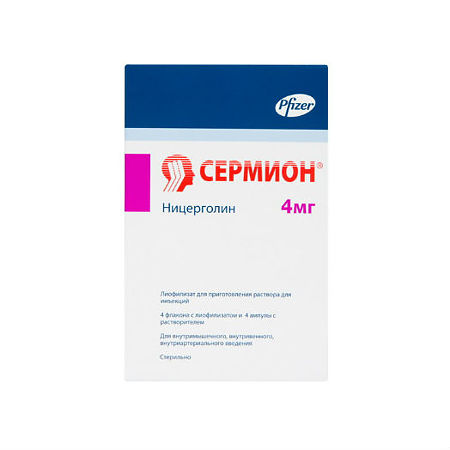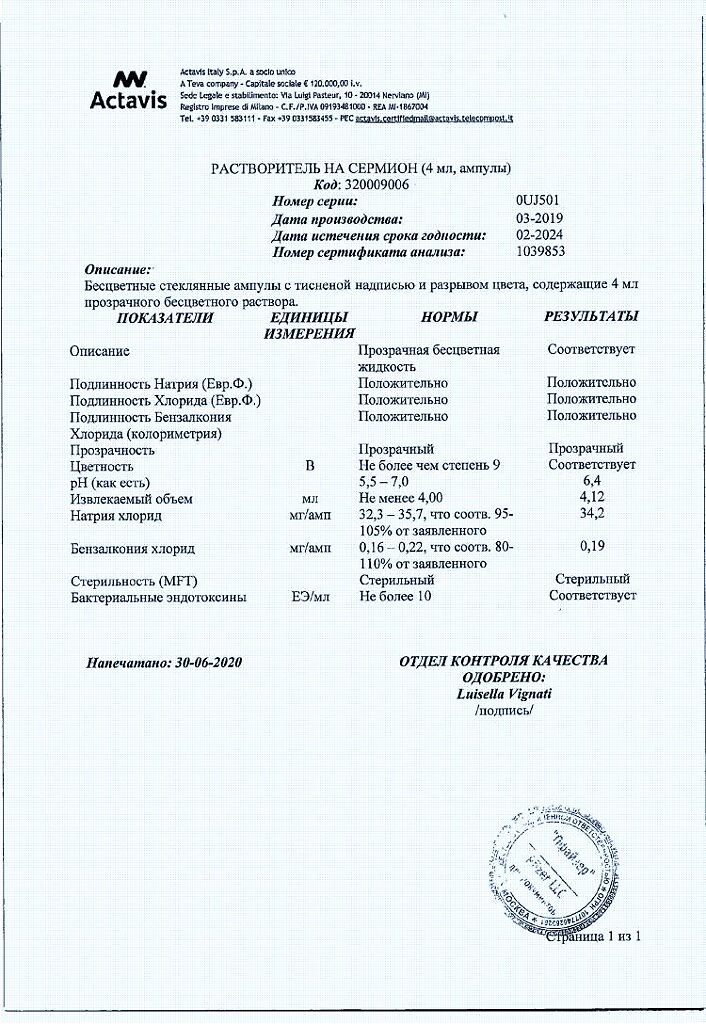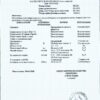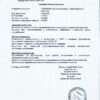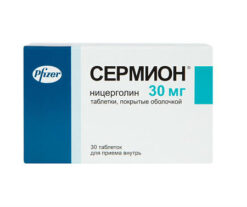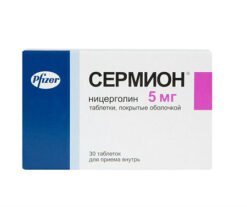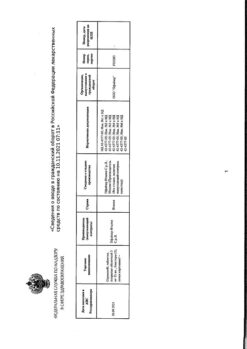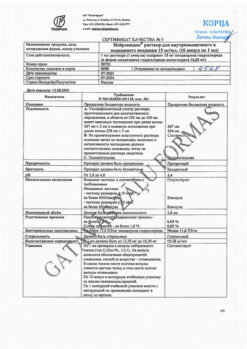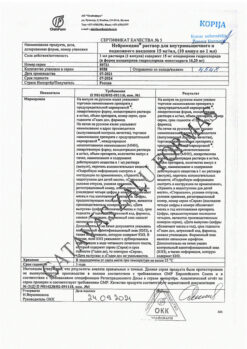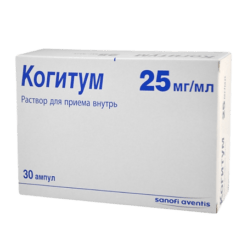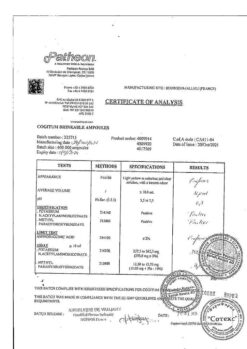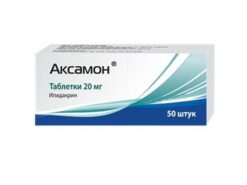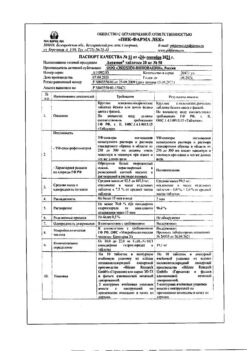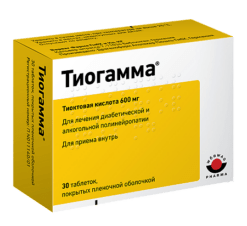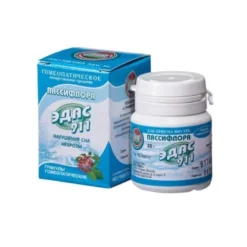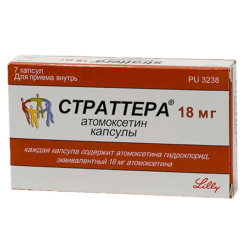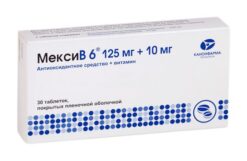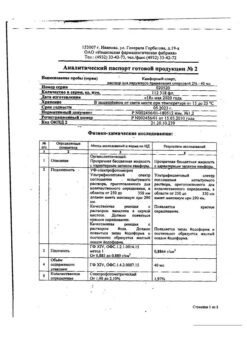No products in the cart.
Sermion, lyophilizate 4 mg 4 pcs
€78.82 €65.69
Description
SERMION is an alpha-adrenolytic.
Pharmacodynamics
Nicergoline is an ergoline derivative, improves metabolic and hemodynamic processes in the brain, reduces platelet aggregation and improves hemorheological blood parameters, increases blood flow rate in the upper and lower extremities. Nitsergoline exhibits α1-adrenoblocking effect, which leads to improved blood flow, and has a direct effect on cerebral neurotransmitter systems – adrenergic, dopaminergic and cholinergic. Against the background of using the drug the activity of adrenergic, dopaminergic and cholinergic cerebral systems increases, which contributes to the optimization of cognitive processes. As a result of long-term therapy with nicergolin a steady improvement of cognitive functions and a decrease in the severity of behavioral disorders associated with dementia were observed.
Pharmacokinetics
Nicergoline is quickly and almost completely absorbed after oral administration. The main products of metabolism of nicergoline are 1,6-dimethyl-8β-hydroxymethyl-10α-methoxyergoline (MMDL, hydrolysis product) and 6-methyl-8β-hydroxymethyl-10α-methoxyergoline (MDL, demethylation product under the action of CYP2D6 isoenzyme). The ratio of the AUC values for MMDL and MDL when administered orally to IV administration of nicergoline indicates marked metabolism during the first passage. After oral administration of 30 mg of nicergoline, MMDL was (21±14) ng/ml and MDL was (41±14) ng/ml, Tmax was 1 and 4 h, respectively, and then MDL concentration decreased with a T1/2 of 13-20 h. Studies confirm the absence of accumulation of other metabolites (includingMMDL) in blood. Food intake or dosage form has no significant effect on the extent and rate of absorption of nicergoline. Nicergoline actively (>90%) binds to plasma proteins, with a greater degree of affinity for α-acid glycoprotein than for serum albumin. It has been shown that nicergoline and its metabolites can be distributed in blood cells. The pharmacokinetics of nicergoline at doses up to 60 mg are linear and do not vary with the age of patients.
Nicergoline is excreted in the form of metabolites, mainly in the urine (approximately 80% of the total dose) and in small amounts (10-20%) in the feces. In patients with severe renal impairment, a significant decrease in urinary excretion of metabolites was observed compared to patients with normal renal function.
Indications
Indications
Moderate cognitive impairment in elderly people with vascular pathology, including dementia.
Pharmacological effect
Pharmacological effect
Nicergoline, a derivative of ergoline, improves metabolic and hemodynamic processes in the brain, reduces platelet aggregation and improves hemorheological parameters, increases the speed of blood flow in the upper and lower extremities. Nicergoline exhibits an α1-adrenergic blocking effect, leading to improved blood flow, and has a direct effect on the cerebral neurotransmitter systems – noradrenergic, dopaminergic and acetylcholinergic. With the use of the drug, the activity of the noradrenergic, dopaminergic and acetylcholinergic cerebral systems increases, which helps to optimize cognitive processes. As a result of long-term therapy with nicergoline, there is a persistent improvement in cognitive functions and a decrease in the severity of behavioral disorders associated with dementia.
The main metabolic products of nicergoline are 1,6-dimethyl-8β-hydroxymethyl-10α-methoxyergoline (MMDL, a hydrolysis product) and 6-methyl-8β-hydroxymethyl-10α-methoxyergoline (MDL, a demethylation product by the CYP2D6 isoenzyme). The ratio of the area under the concentration-time curve (AUC) for MMDL and MDL after intravenous administration of nicergoline indicates a pronounced first-pass metabolism through the liver. Studies confirm the absence of accumulation of other metabolites (including MMDL) in the blood. Food intake or dosage form do not have a significant effect on the degree and rate of absorption of nicergoline. Nicergoline actively (> 90%) binds to plasma proteins, and the degree of its affinity for α1-acid glycoprotein is greater than for serum albumin. The volume of distribution of nicergoline is quite large – > 105 liters, which is likely due to its metabolism in the blood and distribution into blood cells and/or tissues. The pharmacokinetics of nicergoline when using doses up to 60 mg is linear and does not change depending on the age of the patient.
Nicergoline is excreted in the form of metabolites, mainly by the kidneys (approximately 80% of the total dose), and in small quantities (10-20%) through the intestines. In patients with severe renal failure, there was a significant decrease in the rate of excretion of metabolic products in the urine compared with patients with normal renal function.
Special instructions
Special instructions
Clinical studies have shown that with single or repeated use of nicergoline, a decrease in systolic and, to a greater extent, diastolic blood pressure can be observed in patients with normal values and with high blood pressure. These results may vary as other studies have not shown a change in blood pressure values. Patients are advised to remain in a horizontal position for several minutes after Sermion® injection, especially at the beginning of treatment, due to a possible pronounced decrease in blood pressure.
An association with fibrosis (eg, pulmonary, cardiac, valvular, and retroperitoneal) has been noted with the use of ergot alkaloids that have 5HT2B serotonin receptor agonist activity.
Symptoms of ergotism (including nausea, vomiting, diarrhea, abdominal pain, and peripheral vasoconstriction) have been reported with certain ergot alkaloids and their derivatives.
Doctors should be aware of the possible symptoms of ergot drug overdose before prescribing this class of drugs.
Excipients
Nicergoline lyophilisate for the preparation of solution for injection contains lactose obtained from cow’s milk.
Caution should be exercised in patients with known or suspected hypersensitivity to cow’s milk or its components or other dairy products as they may contain traces of dairy ingredients.
Active ingredient
Active ingredient
Nicergoline
Composition
Composition
1 bottle of lyophilisate contains:
active ingredient: nicergoline – 4 mg;
excipients: lactose monohydrate 40 mg, tartaric acid 1.04 mg.
1 ampoule with solvent contains:
sodium chloride 34 mg, benzalkonium chloride 0.2 mg, water for injection q.s. up to 4 ml.
Pregnancy
Pregnancy
Due to the lack of special studies, Sermion® is contraindicated during pregnancy. While using the drug, you must stop breastfeeding, since nicergoline and its metabolic products pass into mother’s milk.
Animal studies have not shown any effect of nicergoline on fertility.
Contraindications
Contraindications
Recent myocardial infarction, acute bleeding, severe bradycardia, impaired orthostatic regulation, hypersensitivity to nicergoline, other ergotamine derivatives or other components of the drug, age under 18 years, pregnancy, breastfeeding.
Side Effects
Side Effects
Very frequent ≥ 1/10
Frequent ≥ 1/100 to < 1/10
Uncommon ≥ 1/1,000 to < 1/100
Rare ≥ 1/10,000 to < 1/1,000
Very rare <1/10,000
Frequency unknown (cannot be estimated from available data)
Mental disorders
Uncommon – psychomotor agitation, confusion, insomnia
Nervous system disorders
Uncommon – drowsiness, dizziness, headache
Frequency unknown – sensation of heat
Vascular disorders
Uncommon – decrease in blood pressure (BP), mainly after parenteral administration, “flushes” of blood to the facial skin
Gastrointestinal disorders
Frequent – feeling of discomfort in the abdomen
Uncommon – diarrhea, constipation, nausea, dyspeptic symptoms
Disorders of the skin and subcutaneous tissues
Uncommon – skin itching
Frequency unknown – skin rash
Laboratory and instrumental data
Uncommon – increased concentration of uric acid in the blood (this effect does not depend on the dose and duration of therapy)
General disorders and disorders at the injection site
Frequency unknown – fibrosis
Immune system disorders
Frequency unknown – allergic reactions in the form of skin itching and rash
An association with fibrosis (eg, pulmonary, cardiac, valvular, and retroperitoneal) has been noted with the use of ergot alkaloids that have 5HT2β serotonin receptor agonist activity.
Symptoms of ergotism (including nausea, vomiting, diarrhea, abdominal pain, and peripheral vasoconstriction) have been reported with certain ergot alkaloids and their derivatives.
Interaction
Interaction
Sermion® may enhance the effect of antihypertensive drugs. Sermion® is metabolized by the CYP2D6 isoenzyme, so the possibility of its interaction with drugs that are metabolized with the participation of the same enzyme cannot be excluded.
When using nicergoline with acetylsalicylic acid, bleeding time may increase.
Nicergoline affects the metabolism and excretion of uric acid, and therefore caution should be exercised when using it with drugs that affect the metabolism of uric acid.
Nicergoline potentiates the effect of beta-blockers on the heart.
Nicergoline has an antagonistic effect on the vasoconstrictor effect of sympathomimetics through its alpha-adrenergic blocking effect.
Overdose
Overdose
Symptoms: transient pronounced decrease in blood pressure. Special treatment is usually not required; the patient just needs to take a horizontal position for a few minutes. In exceptional cases, in case of severe disruption of the blood supply to the brain and heart, it is recommended to administer sympathomimetic drugs under constant blood pressure monitoring.
Storage conditions
Storage conditions
Store at a temperature not exceeding 25 °C. Keep out of the reach of children.
Shelf life
Shelf life
4 years.
Manufacturer
Manufacturer
Wyatt Pharma S.A., Spain
Additional information
| Shelf life | 4 years |
|---|---|
| Conditions of storage | At a temperature not exceeding 25 °C |
| Manufacturer | Wyeth Pharma S.A., Spain |
| Medication form | lyophilizate |
| Brand | Wyeth Pharma S.A. |
Other forms…
Related products
Buy Sermion, lyophilizate 4 mg 4 pcs with delivery to USA, UK, Europe and over 120 other countries.

